These Depictions of Celestial Wonders Helped Make Astronomy Mainstream
Before we had access to stunning photos of our galaxy from ground- and space-based telescopes, visionaries like Étienne Trouvelot’s captured celestial magic through their art
:focal(500x376:501x377)/https://tf-cmsv2-smithsonianmag-media.s3.amazonaws.com/filer_public/19/64/1964e944-52be-4e70-9941-bd5c82e6aa67/23l_fall2023_etienne_trouvelot_art-auroraborealis_live.jpg)
In the chilly early morning hours of November 14, 1868, Étienne Léopold Trouvelot gazed out from an upstairs window in his home at 27 Myrtle Street in Medford, Massachusetts. Trouvelot stationed himself at the window from midnight to 5 am so that he could watch a steady stream of meteors visible in the clear black sky. No doubt thrilled by the astronomical display, he immortalized his observations in a pastel illustration titled November Meteors.
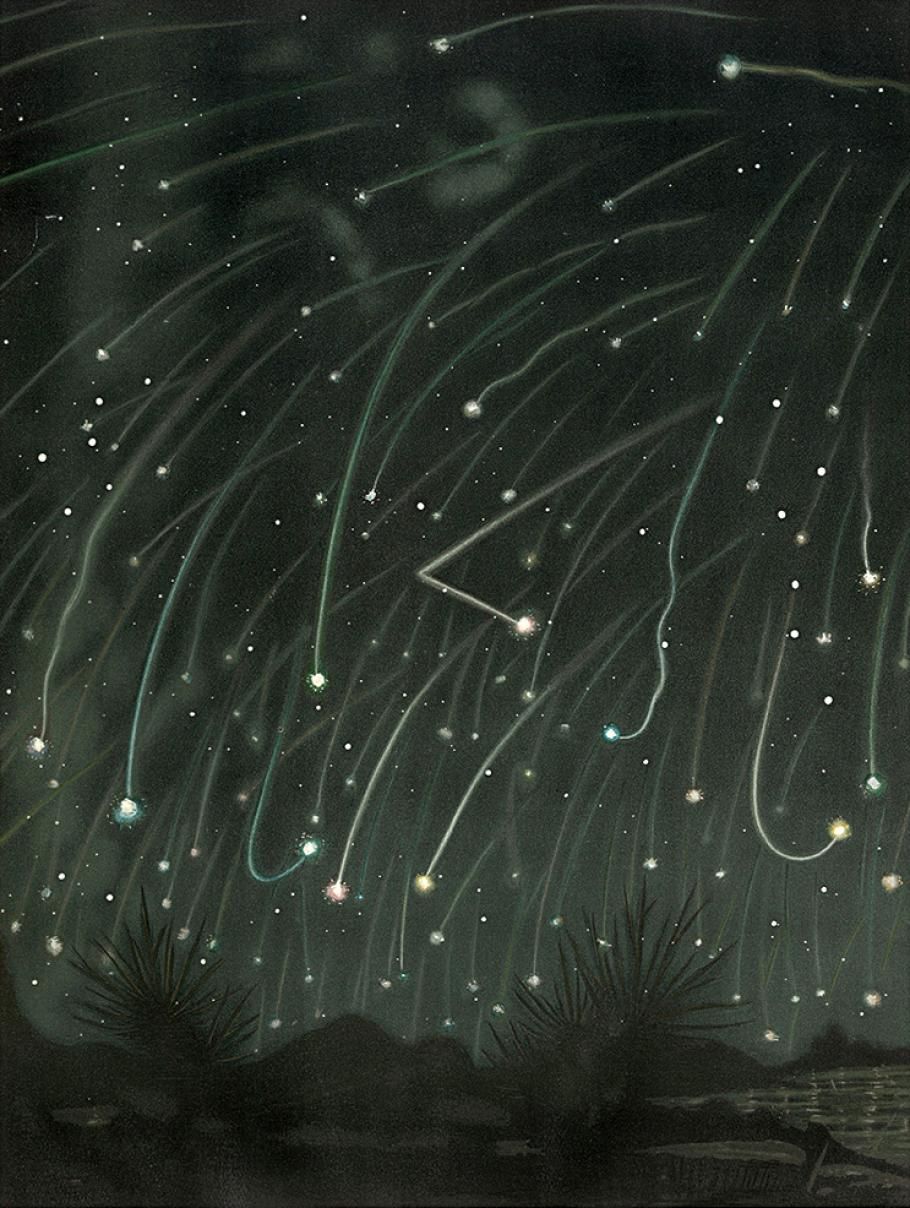
Born in France in 1827, Trouvelot and his family moved to the United States in the mid-19th century. While still living in France, Trouvelot was an amateur entomologist, and—as a trained nature illustrator—he made detailed drawings of insects. Once he moved to Massachusetts, however, his interest in astronomy flourished.
In a time when we are dazzled by the latest high-resolution images from NASA’s James Webb Space Telescope, we can appreciate the charm of Trouvelot’s space art. His fascination with the night sky is evident in a set of 15 pastel drawings published by Charles Scribner’s Sons in 1881–82 as a limited-edition portfolio of chromolithographic prints (a printing process that produces colored images by using multiple plates or stones). The Smithsonian’s National Air and Space Museum has a complete set of the Scribner’s prints, which includes November Meteors. The 15 illustrations are the earliest example of planetary and space art in the Museum’s art collection.
As Trouvelot became more established in the world of astronomy, he gained access to U.S.-based telescopes. But some of his best work is based on naked-eye observations. Such is the case with November Meteors, which suggests time-lapse photography in the way that it captures a five-hour meteor shower. From a radiant point in the sky, Trouvelot presents us with a bombardment of light trails falling toward the ground and tipped with fireballs. Light reflected in a body of water could be the neighboring Mystic River. In the middle of the composition, a stray meteor bends at an angle and detours from scientific accuracy. Perhaps it’s an optical illusion from the viewer’s perspective—or an assertion of artistic license.
Based on another eyewitness event—with a pinch of imagination for good measure—Aurora Borealis depicts the northern lights in delicate colors. In The Trouvelot Astronomical Drawings Manual, published in 1882, the artist explains some of his intentions behind the drawing: “For the most part, the auroral light is either whitish or pale greenish tint: but in some cases, it exhibits the most beautiful colors, among which the red and green predominate. In these cases, the rays and streamers, usually of different colors, produce the most magnificent effects by their continual change and transformations.”

Telescope Time
Trouvelot’s artistic abilities caught the attention of contemporary astronomers. In 1872, Joseph Whitlock, director of the Harvard Observatory in Cambridge, Massachusetts, invited Trouvelot to join the Harvard staff and gave him the opportunity to use the observatory’s powerful 15-inch refractor telescope.
Trouvelot’s telescope privileges proved to be a game changer: His observations would serve as the inspiration for hundreds of drawings, many of which were published in the popular press. A New York Times article in August of the same year, “Astronomical Plates,” describes Trouvelot as an “observer of great skill and experience” and says that his artistic abilities have “unusual merit and value.” The newspaper also credits Trouvelot with promoting the popularity of astronomy: “The work upon which he is engaged with must tend greatly to promote an accurate knowledge of science and even to render it popular, for a person entirely ignorant of astronomy could not fail to be much impressed by the drawings now sent forth from the observatory at Harvard.”
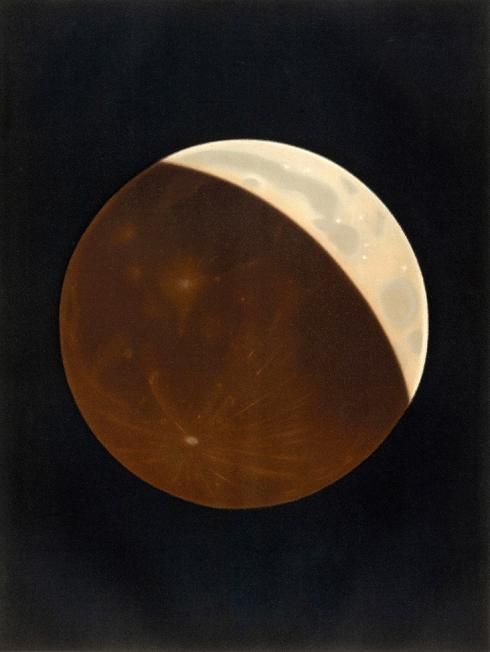
It wasn’t long before Trouvelot received a second opportunity for telescope time. In the fall of 1875, Rear Admiral Charles Henry Davis of the U.S. Naval Observatory in Washington, D.C., invited the artist to use the observatory’s 26-inch telescope. At the time, it was the largest telescope in the world; it is still in use today, though it has been modified several times and moved from its original location. (This November marks the telescope’s 150th “First Light” anniversary.)
Trouvelot accepted Davis’ invitation, and the artist spent 10 days at the Naval Observatory. “Trouvelot was the kind of person who had the artistic skills as well as the observation skills to record the fine-structure detail on the surface of the moon and the planets—very faithful reproductions of what the human eye could see under the best circumstances,” says Geoff Chester, an astronomer and Naval Observatory public affairs official. Trouvelot’s preliminary sketches based on his time at the Naval Observatory formed the basis of a few of the drawings in the Scribner’s portfolio.
Four original Trouvelot drawings—now stored in the Naval Observatory’s rare book vault—were displayed at the Centennial International Exposition in Philadelphia (the first official world’s fair held in the United States) from May to November in 1876. Other science luminaries exhibiting at the Exposition included Alexander Graham Bell, with his telephone invention, and Thomas Edison, who displayed his automatic telegraph system. With 10 million people attending the event, Trouvelot’s ethereal depictions of space undoubtedly kindled an interest in amateur astronomy as a practical hobby.
Trouvelot championed his handmade artistry over the primitive mechanical processes of early photography. “Photography renders valuable assistance to the astronomer in the case of the Sun and Moon,” he wrote in the introduction to his Drawings Manual. “For other subjects, its products are in general so blurred and indistinct that no details of any great value can be secured.” Victorian photography in the planetary sciences was still in its infancy—it simply couldn’t record the finer features of the planets, such as the faint gaps in the rings of Saturn and the intricate structural details in the belts of Jupiter. To achieve more accurate observations, Trouvelot placed a reticle (a piece of ground glass with a measured grid) over the telescope’s eyepiece as a guide and then transferred the fine details to his gridded drawing. He used pastels with a high pigment content, enabling opaque lines and translucent shading by smudging the pastel pigment into the paper.
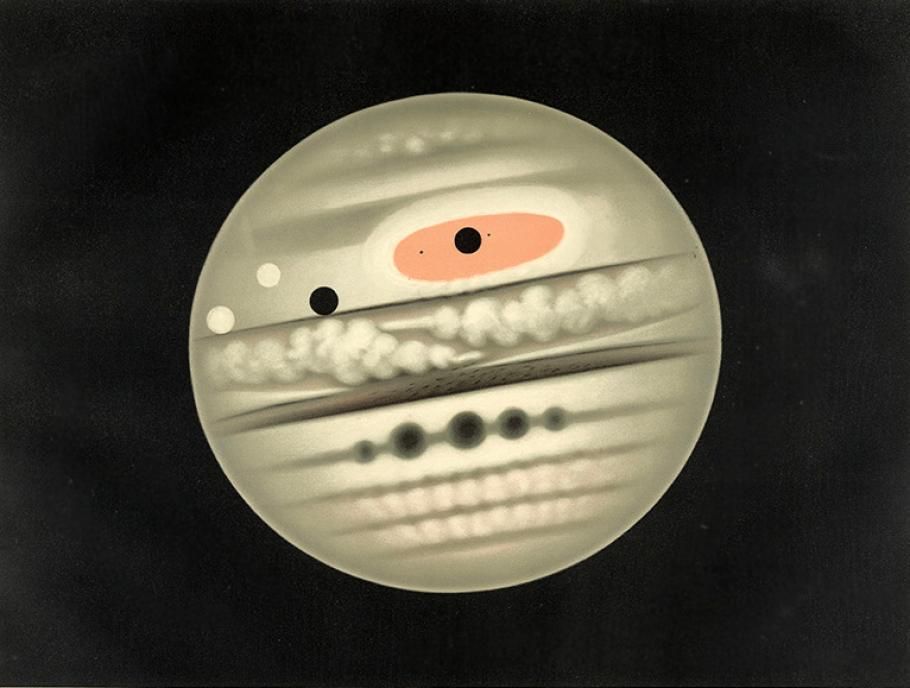
While drawing was an effective medium for putting his observations on paper, Trouvelot faced challenges. Viewing planetary objects at great distances and while they are moving was tricky. Jupiter, for example, rotates quickly, with a full rotation in approximately 10 hours. Another factor was astronomical seeing, a term referring to turbulence in the Earth’s atmosphere that can distort images of celestial bodies. Although a single date and time of observation are marked on each of the Scribner’s chromolithographs, Geoff Chester points out that Trouvelot’s final drawings were compilations of several sketches as well as the artist’s notes on color made over a long period due to the difficulties of astronomical seeing and planetary movements.
Trouvelot had an easier time observing the moon because of its proximity to Earth. And because the moon rotates at the same rate as it revolves around Earth, we always see the same side. One area of the moon that captivated Trouvelot is Mare Humorum, a 260-mile-wide region formed from ancient volcanic lava flows. In a drawing he named Mare Humorum, the lunar surface resembles dried mud—not surprising since Trouvelot’s observations of the moon led him to compare the smooth lunar surface to plaster of Paris.
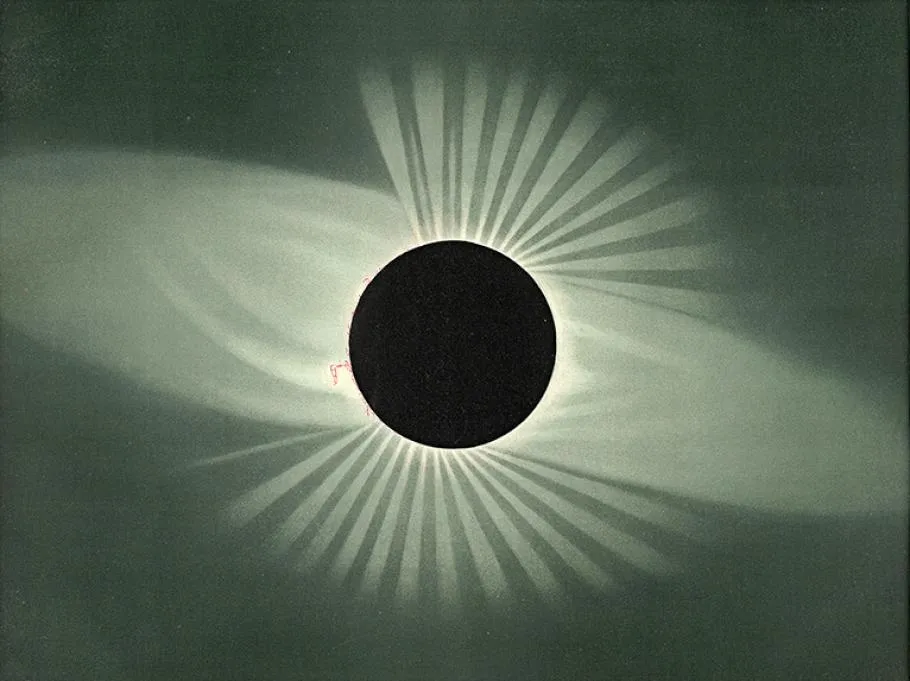
Trouvelot’s scientifically accurate rendering of the moon contrasts with that of mid-20th-century space artist Chesley Bonestell, also an amateur astronomer who used telescopes. In the 1950s, Bonestell painted lunar landscapes with jagged mountain tops and sharp-edged craters (see “Lunar Wonderland,” Spring 2023). Instead of relying solely on observations, he assumed that the lunar surface was rugged due to the moon’s lack of weather and thin atmosphere. Photographs taken from uncrewed spacecraft and by Apollo astronauts in the late 1960s, however, showed that the lunar surface has been smoothed by meteorite impacts. While Bonestell’s work was later deemed incorrect, Trouvelot’s impeccable observations made for an admirably precise depiction of the moon.
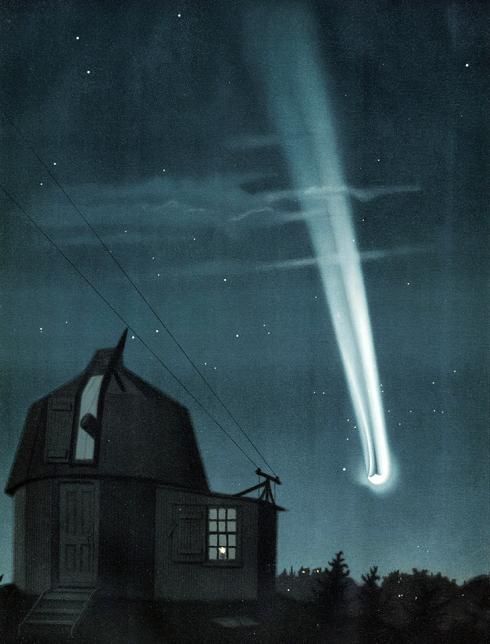
At the height of Trouvelot’s success, however, his reputation took a turn for the worse. While conducting entomological studies, Trouvelot made a grave mistake. On a trip from France, he brought back eggs from the spongy moth (also known as the gypsy moth), and the hatched caterpillars escaped from the backyard of his Massachusetts home. The catastrophic event would eventually lead to a far-flung infestation—still going on in some parts of the United States. Trouvelot reported the initial incident, but his neighbors and others ignored his concerns. While this experience marked the end of Trouvelot’s entomological ambitions, he was able to continue his career as a nature illustrator by looking skyward.
The art of Trouvelot has inspired generations of astronomers and artists. The chromolithographic prints have stood the test of time, with vivid colors still intact after 142 years. The rare Scribner’s portfolios are housed in public and private institutions, but Trouvelot’s legacy transcends Earth. On the moon and Mars, two craters are named after the artist—a fitting tribute to a man who recognized the beauty of the heavens and shared that recognition through his art.
This article is from the Fall issue of Air & Space Quarterly, the National Air and Space Museum's signature magazine that explores topics in aviation and space, from the earliest moments of flight to today. Explore the full issue.
Want to receive ad-free hard-copies of Air & Space Quarterly? Join the Museum's National Air and Space Society to subscribe.

